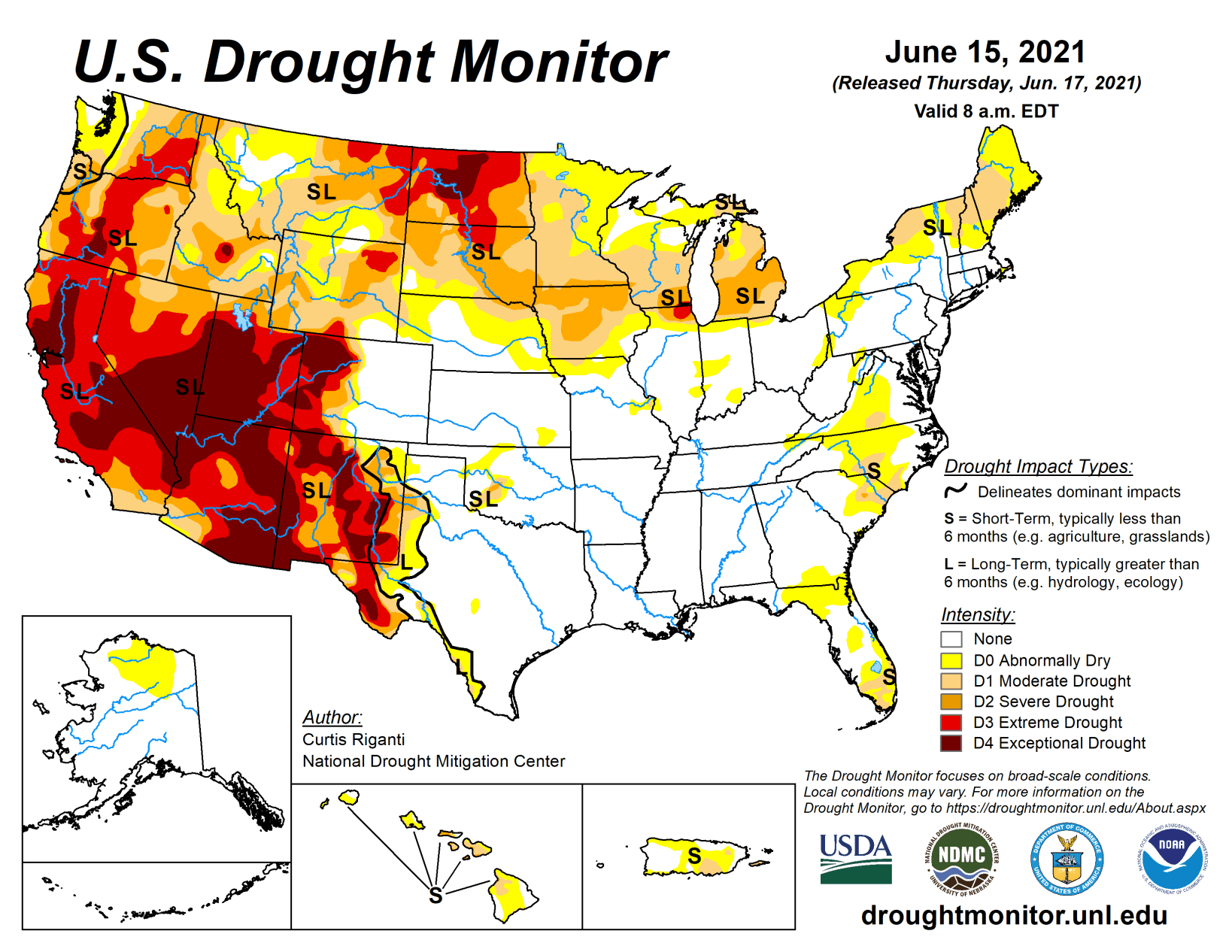Warmer than normal temperatures continued their hold this week on the northern tier of the Lower 48, particularly in the northern Great Plains and Upper Midwest. Across the north, widespread degradation of drought conditions occurred in areas where heavy rainfall missed.
Scattered storms over the last few weeks in the southern Great Plains and eastern New Mexico led to isolated improvements to drought conditions, and a few degradations to drought conditions in western Oklahoma where heavier storms missed.
High Plains
Precipitation across the High Plains region varied significantly this week, though very warm temperatures were consistent across the region. Notably, many places in the central and northern Great Plains have had warmer daytime high temperatures than much of the southern Great Plains, leading to potentially large losses of surface moisture to the atmosphere through evaporation and transpiration in the northern Great Plains.
A few areas in the western half of North Dakota received enough rain from several thunderstorm events to improve their drought status, though this primarily occurred in areas with very heavy rain amounts (some locales received over 5 inches). For the most part, while welcome, the heavy rains have come after months of warm and dry conditions, and the widespread severe, extreme, and exceptional drought has been slow to improve as impacts to plants and livestock continue. In north-central and northeast South Dakota, and adjacent portions of North Dakota, moderate and severe drought expanded.
South
Scattered heavy rain fell across the eastern half of the region this week, while rains were much spottier (though locally heavy) in Texas and Oklahoma. Moderate and severe drought conditions shifted northwest in western Oklahoma in response to changing conditions after rain this week, leaving some areas improved and others degraded. Several areas in southwest Texas saw improvement this week after rain from the last couple of weeks improved conditions there. In southwest Texas, the Trans-Pecos, and along the Rio Grande to near Laredo, abnormal dryness and all drought categories continued.
Midwest
Generally warm and dry conditions prevailed in the northern half of the region over the past week, leading to widespread worsening of drought and dryness. Continued warm and dry weather worsened precipitation deficits in the western and northern parts of Chicagoland, as well as in adjacent southeast Wisconsin, and extreme drought developed in those areas. In this general region, many crops are struggling due to the ongoing severe and extreme drought.
Moderate drought also developed across central Wisconsin as short-term precipitation deficits mounted. Moderate drought coverage also grew in western regions of Minnesota. Drought coverage also expanded across a large portion of southern Iowa. Recent dry weather and lowering streamflow led to the development of moderate drought in St Louis County, Missouri.
West
Three notable widespread precipitation events occurred in the northwestern United States this week, which led to limited improvements in northeast Montana, western Montana, and coastal regions of Washington and Oregon. Recent scattered rainfall from thunderstorms in the high plains and high desert of eastern and south-central New Mexico improved drought conditions locally, though widespread moderate-to-exceptional drought maintained its grip on most of the state. Northeast Montana received locally enough rain from severe thunderstorms for limited improvement from extreme to severe drought. However, similar to North Dakota and South Dakota, agricultural impacts and warm temperatures continued, limiting the rain’s benefit on conditions in the area. A swath of precipitation covered areas from southwest Idaho to the high country of western Montana, leading to a small area of improved conditions in western Montana.
Degradations to conditions occurred in northeast California and south-central Oregon, southern Montana, central and western Wyoming, far east-central Wyoming, and the high country of west-central Colorado. All of these locations saw short- and long-term precipitation deficits continue to mount. Most of the West region remained in moderate, severe, extreme, or exceptional drought.



